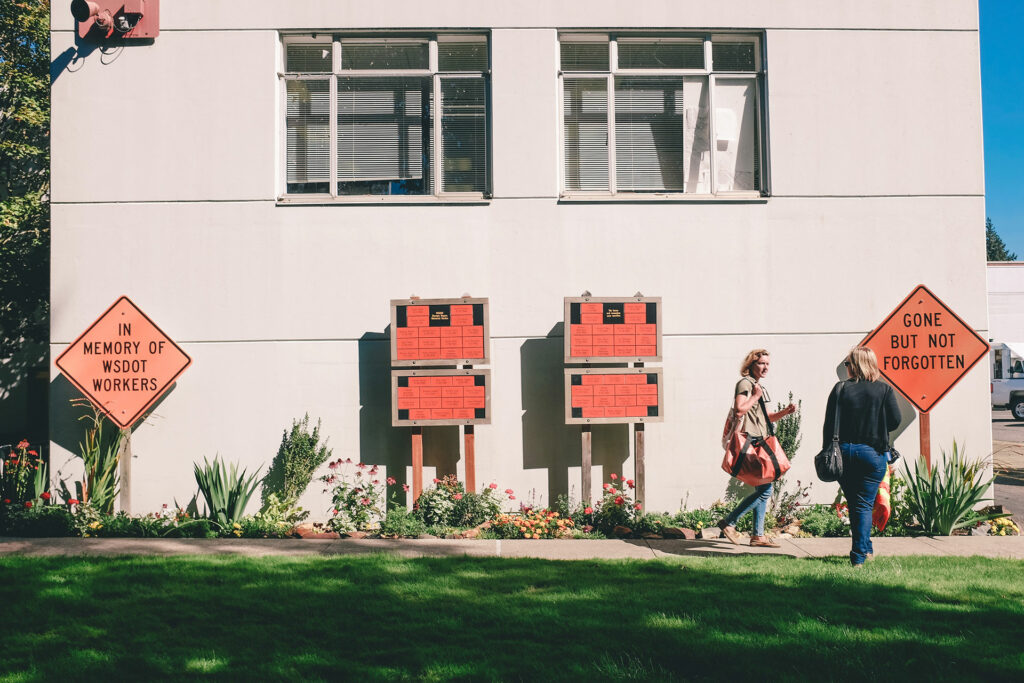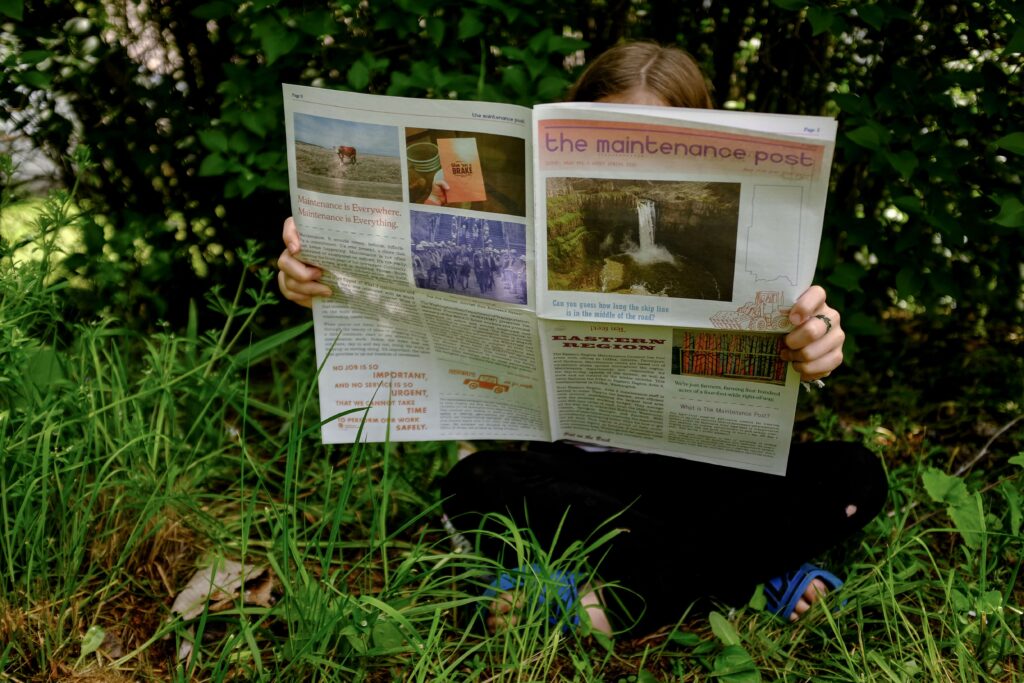Washington State Department of Transportation (WSDOT) launched the country’s first-ever artist-in-residence program in a state agency, with artists focusing on the agency’s creative thinking and producing tools to support the work of WSDOT’s thousands of staff members.
The challenge
The decades-old concept of integrating art within government has increased in popularity in the last couple of years as cities created a number of artist-in-residencies within their departments of planning, parks and recreation, transportation, and more. But it had never been done at the state level.
It was clear that having an artist work within a state department of transportation could help the state better accomplish its goals and result in transportation projects that are more supported and beloved. This idea started to crystallize toward the end of 2018 when T4America approached MNDOT and WSDOT about hosting an artist in their respective agencies. T4America helped both agencies fundraise and design their programs, and since the launch in the summer of 2019 has managed the programs and hired the artists. After a national search, WSDOT selected the artist team of Kelly Gregory, based in the Bay Area, and Mary Welcome, based in Palouse, in eastern Washington.
What made these residencies unique is that they not only were the first programs to occur at state departments of transportation, but at any agency at the state level.

The project
Gregory and Welcome’s approach included several months of listening and intentionally “getting lost in the weeds with WSDOT.” If you’re wondering what that actually looked like, they tracked it. They read exactly 69 different reports from different folks in the agency, interviewed 147 different people, traveled over 161 hours, conducted 600 hours of on site work and 170 hours of off-site research, traveled 2978 lane miles on the road and 1830 rail miles, handwrote 190 pages of interview notes, and attended 18 different public legislative hearings.
From their research, they identified a number of themes that they used to shape their numerous final products. Those final products included transforming their office space at WSDOT headquarters into a gallery and gathering space, creating a bumper sticker campaign and DOT-specific conversation cards, as well as writing and printing a newspaper on WSDOT’s maintenance efforts. (And now the physical materials they created can be purchased for you to use in your own transportation-minded teams)
Upon finishing their rotations, Gregory and Welcome converted two empty offices in WSDOT’s Olympia headquarters building into a gallery and creative space. Covering the walls with photographs from their rotations as well as anonymous quotes from their many conversations with WSDOT staff members, the artists invited their coworkers to join them in the space to brainstorm new project ideas and think creatively. By naming the rooms a creative space, WSDOT staff members felt more comfortable letting their guard down and getting creative.

The DOT Deck
Building on the success of their creative office space, Gregory and Welcome next produced the DOT Deck, a deck of cards designed to help WSDOT staff and other transportation professionals “understand and inhabit the conversational nature of transportation work.” Each card features a quote from an anonymous WSDOT staff member, which is intended to be used as a starting point for a conversation, brainstorming, or icebreakers at meetings.
Bumper stickers
The artists developed a campaign of catchy bumper stickers with slogans like “Ride the Damn Bus!” and “Maintenance is Sexy” (the most popular bumper sticker, now a collector’s item). These stickers were distributed across the agency and served as another icebreaker for Gregory and Welcome to meet even more of their colleagues.

Maintenance Post
Gregory and Welcome recognized that, while new transportation projects are often celebrated with ribbon cuttings, parades, and celebrations, the routine work of maintaining existing infrastructure slips under the radar, despite serving a far more important role for far more people. To remedy this discrepancy, the artists produced a new publication, the Maintenance Post.

Gregory and Welcome summarize the Maintenance Post as “a hyper-local newsprint publication that connects the traveling public to the often invisible labor of maintenance and preservation workers within the Washington State Department of Transportation. The job of maintaining transportation infrastructure, keeping people safe, and keeping goods moving 24 hours a day and 365 days of the year is no small feat. If everything is working well, nobody notices! The Maintenance Post humanizes the people-powered practice of stewarding our shared transportation network.”
Inspired by Gregory and Welcome’s discovery of WSDOT’s internal maintenance newsletters from the 1970s, the artists launched the new Maintenance Post with an issue focused on the Eastern Region, Area 2 Maintenance Office, and distributed copies across the state with the hopes of informing WSDOT employees and Washington residents about the important work of maintaining transportation infrastructure in a rural part of the state.
The results
Like MnDOT’s residency program, Gregory and Welcome began their residency without a specific project in mind. Rather, the artist team started with a series of rotations through WSDOT’s core divisions and six regional offices to learn as much as possible about the inner workings of the complex state bureaucracy. With more than 7,000 staff members, WSDOT is tasked with everything from maintaining roads and bridges to clearing snow from mountain passes and operating one of the world’s largest ferry systems.
Through countless conversations with their new colleagues, Gregory and Welcome developed several projects to help WSDOT staff bring their full creative selves to work, brainstorm more effectively, and learn more about the complex work their fellow workers are routinely engaged in.
People felt heard. They felt understood. And they felt valued. If I could do anything differently, it would have been to set up a two-year program.
Allison Camden, Deputy Assistant Secretary Multimodal Development and Delivery, WSDOT
You can purchase the materials created by Gregory and Welcome during their residency via Flower Press.
This text is adapted from a piece that originally appeared in FORWARD Issue #2: Transportation and on T4America’s website and has been reposted here with permission.






